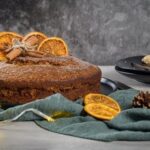Russian cake decorating is an art form that has captivated people from around the world with its intricate beauty and stunning designs. From delicately piped patterns to elaborate sugar sculptures, Russian cake decorators have mastered the art of transforming ordinary cakes into works of art. In this article, we will delve into the world of Russian cake decorating, uncovering its fascinating history, showcasing traditional designs, and unveiling the secrets behind achieving professional-looking decorations at home.
Russian cake decorating techniques can be traced back centuries, with influences from various cultures and artistic traditions. Over time, these techniques have evolved and been passed down through generations, resulting in a unique style that is instantly recognizable. Each cake design tells a story and reflects the rich cultural elements and symbolism of Russia. From floral motifs inspired by traditional embroidery to intricate patterns reminiscent of famous Russian ceramics, every detail is carefully considered to create a visually stunning masterpiece.
To achieve the perfect Russian cake decoration, it is important to understand not only the techniques but also the ingredients and tools used. From handcrafted piping tips to fine edible paints and gold leaf accents, every element plays a crucial role in creating the desired effect. In this article, we will unravel the secrets behind these ingredients and tools, providing you with expert advice on how to achieve professional-looking results.
Whether you are an experienced baker or just starting out on your culinary journey, mastering Russian piping tips can take your creations to a whole new level. These specialized tips allow for easy creation of intricate designs such as flowers, leaves, and even entire landscapes. In this article, we will provide you with a step-by-step guide on how to use these tips effectively, so you can achieve stunning results that will wow your friends and family.
Join us as we explore the fascinating world of Russian cake decorating in this comprehensive article. From renowned cake artists sharing their inspiring stories to popular techniques like Gzhel, Zhostovo, and Khokhloma being unveiled, there is something for everyone to discover.
Whether you are looking to decorate a birthday cake or simply want to unleash your creativity in the kitchen, this article will provide you with all the information and inspiration you need to embrace the elegance and timeless beauty of Russian cake decorating.
A Brief History
Russian cake decorating has a rich history that spans several centuries. The art of cake decoration in Russia can be traced back to the 17th century, where it initially started as a way to adorn cakes for special occasions such as weddings and religious ceremonies. Over time, Russian cake decorators developed their own unique techniques and styles that have become synonymous with the country’s rich cultural heritage.
The Influence of European Cake Decorating
The origins of Russian cake decorating can be attributed to the influence of European cake decorating techniques, particularly from France and Germany. In the 18th century, Russian nobility began adopting these techniques, which were often characterized by intricate designs and delicate details. However, Russian artists soon began incorporating their own traditional elements into these designs, creating a distinct and recognizable style.
Symbolism in Russian Cake Designs
Russian cake decorating is not just about creating visually stunning cakes; it also involves incorporating symbolic elements into the designs. Traditional Russian cake designs often feature intricate floral patterns, ornate scrolls, and religious symbols. These decorations are believed to bring blessings and good luck to those who consume the cakes. Additionally, colors play an important role in Russian cake decoration, with each color carrying its own symbolism. For example, red symbolizes joy and happiness, while white represents purity.
The Evolution of Russian Cake Decorating Techniques
Over time, Russian cake decorators have continued to experiment and innovate with new techniques and styles. One notable innovation is the use of Russian piping tips, which have gained popularity around the world for their ability to create stunning floral designs with ease. Another technique that has become synonymous with Russian cake decorating is sugar flower making. Skilled artisans meticulously craft delicate flowers out of sugar paste or gum paste to create realistic floral arrangements on cakes.
From its humble beginnings in the 17th century to its evolution into a highly regarded art form today, Russian cake decorating continues to captivate and inspire people around the world. Its intricate beauty and unique cultural elements make it a truly special form of cake decoration. As we delve further into the world of Russian cake decorating, we will explore traditional designs, master the techniques, and discover inspiring stories from renowned Russian cake artists.
Traditional Russian Cake Designs
Russian cake decorating is known for its intricate and elaborate designs, which often incorporate unique cultural elements and symbolism. These cake designs are not only visually stunning but also tell stories and reflect the rich traditions and history of Russian culture. From the use of vibrant colors to the inclusion of traditional motifs, each cake design carries its own significance.
One of the most iconic traditional Russian cake designs is the “Matryoshka” or nested doll design. This design involves layering different-sized cakes on top of each other, creating a stacked effect reminiscent of the famous Matryoshka dolls. Each layer is decorated with vibrant patterns and symbols that represent different aspects of Russian culture. Often, these patterns include traditional folk motifs such as flowers, fruits, leaves, or geometric shapes.
Another popular traditional Russian cake design is the “Korovai,” which is typically made for special occasions such as weddings or anniversaries. The Korovai is a tall, cylindrical-shaped cake that symbolizes abundance and happiness. It is adorned with intricate braids and patterns made from dough or icing, representing fertility, unity, and eternity.
When it comes to color symbolism in Russian cake designs, red holds significant importance. Red represents joy, passion, and celebration in Russian culture. It is commonly used in wedding cakes to symbolize love and happiness. Other colors like gold and white are also prominent in Russian cake decorating as they represent wealth and purity respectively.
To create these beautiful traditional designs, Russian cake decorators use a variety of tools such as piping bags with various tips for intricate detailing. They may also utilize stencils to achieve precise patterns or molds for creating specific shapes like flowers or figurines.
Ingredients and Tools
Russian cake decorating is known for its intricate and breathtaking designs. To achieve these stunning decorations, it is important to understand the key ingredients and tools used in Russian cake decorating.
One of the essential ingredients in Russian cake decorating is royal icing. This type of icing dries hard and is perfect for creating intricate details and designs on cakes. It consists of egg whites, confectioners’ sugar, and lemon juice or cream of tartar. Royal icing can be colored using gel food coloring to create vibrant and eye-catching designs.
In addition to royal icing, another common ingredient in Russian cake decorating is marzipan. Marzipan is made from ground almonds, sugar, and sometimes almond extract or rose water. It can be shaped into various figures and used to create three-dimensional decorations on cakes.
Apart from these ingredients, there are several tools that are indispensable in Russian cake decorating. These include:
- Piping bags: Piping bags with different tips are used to pipe the royal icing onto the cake in various shapes and patterns. Russian piping tips have become particularly popular due to their ability to create intricate floral designs with just one squeeze.
- Decorating combs: These tools are used to create texture on the surface of the cake. They come in various patterns such as zigzags or waves, which can add an interesting visual element to the decorations.
- Stencils: Stencils are used to create precise patterns on cakes. They can be made from plastic or cardboard and come in a wide variety of designs, allowing decorators to achieve perfectly symmetrical designs on their cakes.
By understanding the key ingredients and tools used in Russian cake decorating, you can begin unraveling the secrets behind achieving perfect decorations on your own cakes. Experiment with different techniques and let your creativity shine as you create beautiful edible works of art.
Mastering the Russian Piping Tips
Choosing the Right Russian Piping Tips
To master the art of Russian cake decorating, it is essential to have the right tools, and one of the most important tools in this craft is the Russian piping tips. These unique tips come in various shapes and sizes, each designed to create specific patterns and designs on cakes.
When choosing Russian piping tips, it’s crucial to consider the size and shape that best suits your desired design. For beginners, it is recommended to start with basic shapes such as flowers or stars before moving on to more intricate designs.
Preparing Your Frosting
Before you begin using your Russian piping tips, it’s important to prepare your frosting properly. The consistency of your frosting affects how well the design holds its shape. To achieve the best results with Russian piping tips, a stiff consistency buttercream frosting works best. This means that the frosting should hold its shape when piped but still be pliable enough to be easily squeezed through the tip.
Mastering Piping Techniques
Once you have chosen your Russian piping tip and prepared your frosting, it’s time to start piping. To achieve stunning and intricate designs with Russian piping tips, it’s important to master some key techniques:
- Holding the Piping Bag: Hold the bag at a 45-degree angle with one hand while using your other hand to guide and control the flow of frosting.
- Applying Steady Pressure: Apply steady and even pressure as you pipe to ensure consistent flow of frosting.
- Squeezing Technique: To create defined edges and lines in your design, gradually increase or decrease pressure while squeezing out the frosting.
- Practice Makes Perfect: Don’t be discouraged if your first attempts don’t turn out perfectly. Like any skill, mastering Russian cake decorating takes practice. Keep practicing different designs until you achieve the desired results.
By following these step-by-step guidelines and practicing frequently, you’ll soon find yourself creating stunning and intricate designs with Russian piping tips. Whether you’re a beginner or an experienced baker, these tips will help elevate your cake decorating skills to new heights.
Step into the Russian Cake Decorating World
Russian cake decorating is not just a culinary art form, but a means of storytelling and self-expression. In this section, we will hear the inspiring stories of some renowned Russian cake artists who have made a name for themselves in the world of cake decoration.
The Story of Elena
Elena started her journey as a baker 15 years ago in a small bakery in St. Petersburg. Over time, she discovered her passion for cake decorating and decided to pursue it full-time. She honed her skills by attending workshops and learning from experienced decorators. Today, Elena is known for her exquisite sugar flowers and delicate hand-painted designs that often feature Russian folklore elements.
The Journey of Andrei
Andrei’s love for baking began at an early age when he used to help his grandmother in the kitchen. Although he pursued a career in engineering, Andrei’s passion for decorating cakes never faded away. After attending various cake decorating courses, he started experimenting with traditional Russian techniques such as Gzhel and Zhostovo painting. Andrei’s unique combination of engineering precision and artistic flair has earned him recognition as one of the top Russian cake artists today.
The Evolution of Natalia
Natalia’s journey into the world of cake decoration began after she inherited her grandmother’s collection of vintage cake decorations. Inspired by their beauty, she decided to revive the lost art forms and incorporate them into modern designs. Through extensive research and experimentation, Natalia has created a signature style that seamlessly blends traditional Russian motifs with contemporary trends.
These are just a few examples of the many talented Russian cake artists who have dedicated their lives to perfecting their craft. Each artist brings their own unique perspective and style to the table, elevating Russian cake decorating to new heights. By embracing tradition while also pushing boundaries, these artists inspire others to explore their creativity and create beautiful edible masterpieces.
Popular Russian Cake Decorating Techniques
Gzhel: The Blue and White Delight
One of the most beloved and recognizable Russian cake decorating techniques is Gzhel. Originating from the town of Gzhel, this technique showcases stunning blue and white designs that resemble delicate porcelain. Gzhel patterns often feature intricate floral motifs, geometric shapes, and traditional Russian symbols such as kokoshniks (headpieces worn by women) and matryoshka dolls.
To achieve the iconic Gzhel look, cake decorators use a combination of piping techniques and hand painting. The base of the cake is covered in smooth white fondant or buttercream, acting as a canvas for the delicate blue designs. Piping bags fitted with small round tips are used to create fine outlines and fill in the designs with blue royal icing or buttercream.
Zhostovo: A Blossoming Garden on Cakes
Zhostovo is another popular Russian cake decorating technique that dates back to the early 19th century. Originating from the village of Zhostovo near Moscow, this style is known for its vibrant and realistic flower paintings adorning cakes. Zhostovo designs include an array of flowers such as daisies, roses, tulips, and lilies which are painted with rich colors using oil-based paints.
Cake decorators skilled in Zhostovo carefully apply thin layers of oil paint onto specially prepared paper before carefully transferring it onto the cake’s surface. This technique gives cakes a three-dimensional effect, creating an illusion of real flowers blooming on top of confectionery creations. Zhostovo artworks often feature lush green leaves accompanied by delicate scrollwork patterns to enhance their charm.
Khokhloma: A Gleaming Golden Touch
Khokhloma is a distinct Russian cake decorating technique renowned for its vivid red and gold color palette. Inspired by traditional wooden art from the Khokhloma region, this technique involves intricate hand-painted decorations featuring bold floral motifs and delicate golden accents. The combination of red and gold creates an opulent and festive atmosphere.
Cake decorators practicing Khokhloma often begin by covering the cake in bright red fondant or buttercream. The design is then meticulously hand-painted using edible gold paint, which adds a luxurious touch to the overall appearance. Popular elements in Khokhloma designs include berries, leaves, flowers, and ornate swirls that give cakes a truly Russian and regal aesthetic.
Delve into the world of Gzhel, Zhostovo, and Khokhloma to discover the unique techniques and cultural significance they bring to Russian cake decorating. These styles offer endless possibilities for adding beauty and elegance to any confectionery creation. Whether you choose Gzhel’s delicate blue and white patterns, Zhostovo’s blossoming garden of flowers, or Khokhloma’s gleaming golden touch, each technique showcases the rich heritage of Russian cake decorating.
Tips and Tricks
In order to achieve professional-looking Russian cake decorations at home, it is important to learn and implement some expert tips and tricks. These techniques will help create stunning designs that truly capture the beauty and intricacy of Russian cake decorating.
One important tip is to invest in high-quality ingredients and tools. This includes using fresh, high-quality butter, eggs, flour, and other ingredients for your cake batter. Additionally, having the right tools such as Russian piping tips, offset spatulas, turntables, and a good quality frosting bag can make a significant difference in achieving precise and beautiful decorations.
When it comes to using Russian piping tips, it is essential to understand their design and how they should be used. These tips come in various shapes and sizes, each creating different patterns when piped onto a cake. It’s important to practice with these tips before attempting any intricate designs. Mastering the technique of applying consistent pressure while piping is also crucial in order to achieve clean lines and well-defined details.
Another important aspect of achieving professional-looking Russian cake decorations is effective color control. Using gel-based food colors can help achieve vibrant shades without compromising the consistency of your icing. When using multiple colors for one design, it’s advisable to use separate bags or couplers for each color to maintain precision.
Furthermore, taking the time to plan out your design beforehand can greatly contribute to achieving a professional finish. Sketching your design on paper or creating a digital mock-up can help you visualize the end result and guide your decorating process.
By following these expert tips and tricks, home bakers can elevate their skills in Russian cake decorating and create impressive designs that rival those made by professionals. With practice and patience, anyone can achieve beautiful results that showcase the elegance and timeless beauty of this art form.
Beyond Cakes
Russian cake decorating techniques are not limited to just cakes. The intricate and beautiful designs can be applied to a wide range of culinary delights, adding an extra touch of elegance and artistry to various desserts and treats. From cookies and pastries to cupcakes and chocolates, Russian cake decorating techniques offer endless opportunities for creative expression in the world of confectionery.
One popular application of Russian cake decorating is in the realm of cookies. Using traditional piping techniques with specially designed icing tips, bakers can create stunning and detailed designs on sugar cookies or gingerbread cookies. Whether it’s delicate floral patterns or intricate lace-like designs, Russian cake decorating techniques elevate simple cookies into edible works of art.
Pastries also lend themselves well to Russian cake decorating. Cream puffs, éclairs, and other filled pastries can be adorned with elegant piped cream or ganache decorations. These delicate designs not only enhance the visual appeal but also bring added texture and flavor to the pastries.
Furthermore, cupcakes become even more enticing when decorated using Russian piping tips. With a variety of shapes and sizes available, these tips allow bakers to easily create elaborate flower petals or ruffled frosting that resembles fabric or lace. Cupcakes decorated with Russian piping techniques become irresistible treats that are as pleasing to the eye as they are to the taste buds.
Incorporating Russian cake decorating techniques into chocolates is another creative way to showcase their versatility. Chocolatiers can use these techniques to decorate chocolate bonbons, truffles, or even chocolate bars. By carefully piping patterns onto the chocolates using melted colored cocoa butter, artisans can transform simple chocolates into exquisite pieces reminiscent of traditional Russian motifs.
From cookies and pastries to cupcakes and chocolates, there are numerous ways to explore the versatility of Russian cake decorating in other culinary delights. The key is to embrace creativity and experiment with different applications for these beautiful techniques. Whether it’s a special occasion or simply a way to elevate everyday treats, Russian cake decorating can add a touch of elegance and sophistication to any dessert.
Unleash Your Creativity
Russian cake decorating offers endless opportunities for creative expression. With its intricate designs and unique techniques, it’s no wonder why more and more people are becoming interested in trying their hand at DIY Russian cake decorating projects. Whether you’re a beginner or an experienced baker, there’s something for everyone to explore in the world of Russian cake decoration.
To help you unleash your creativity, here are some DIY Russian cake decorating projects that you can try today:
- Matryoshka Doll Cake: The iconic Matryoshka dolls, also known as Russian nesting dolls, serve as perfect inspiration for a whimsical cake design. Start by baking two or three different sized round cakes and stack them on top of each other, with the largest one at the bottom. Decorate each layer to resemble a different doll using fondant or buttercream icing. Add intricate details like facial features, flowers, and traditional patterns to bring the dolls to life.
- Gzhel-inspired Cupcakes: Gzhel is a famous Russian style of pottery that is characterized by its blue and white color palette and delicate floral patterns. To create Gzhel-inspired cupcakes, simply bake your favorite cupcake recipe and frost them with smooth white buttercream icing.
Use blue food coloring or edible blue paint to hand-paint intricate floral designs on top of the frosting. Finish off by adding small fondant flowers or royal icing accents for an extra touch of elegance. - Khokhloma Cookies: Khokhloma is a traditional Russian folk art style that often features vibrant colors and floral motifs. Bring this beautiful art form to your cookies by baking gingerbread or sugar cookies in various shapes like hearts, stars, or leaves.
Once cooled, decorate them with royal icing in bold colors like reds, yellows, greens, and blacks to mimic the signature Khokhloma style. Pipe intricate floral designs on top using small round piping tips or use stencils to create precise patterns.
By embarking on these DIY Russian cake decorating projects, you can not only explore your creative side but also bring a touch of Russian elegance to your cakes and other sweet treats. So gather your ingredients, unleash your imagination, and let the magic of Russian cake decorating unfold in your kitchen today.
Conclusion
Russian cake decorating is a truly captivating art form that showcases the intricate beauty and timeless elegance of this unique culinary tradition. Throughout the exploration of the origins, designs, techniques, and stories behind Russian cake decorating, it becomes clear that this craft is much more than just a way to adorn cakes – it is a celebration of culture, symbolism, and creativity.
By embracing the elegance and timeless beauty of Russian cake decorating, we can bring a touch of enchantment into our own baking endeavors.
Through the journey of uncovering the history and evolution of Russian cake decorating techniques, we discover how this art form has been passed down through generations, evolving and adapting along the way. Traditional Russian cake designs offer a glimpse into the rich cultural elements and symbolism that are reflected in every delicate detail.
Whether it’s through Gzhel’s blue-and-white porcelain-inspired motifs, Zhostovo’s vibrant flower paintings or Khokhloma’s iconic folk patterns, each technique brings its own distinct personality to the world of cake decoration.
The secrets behind achieving perfect Russian cake decorations lie not only in selecting high-quality ingredients but also in working with specialized tools. Mastering the art of using Russian piping tips opens up a world of possibilities for creating stunning and intricate designs. By following step-by-step guides and advice from renowned Russian cake artists, one can learn valuable techniques that bring professional-looking results into their own home kitchen.
Beyond cakes themselves, Russian cake decorating proves to be an art form that extends its creativity beyond traditional boundaries. The versatility of these techniques can be applied to other culinary delights such as cookies, cupcakes, and pastries, allowing for endless opportunities to experiment with various flavors and forms.
In conclusion, embracing the elegance and timeless beauty of Russian cake decorating is not only about creating visually stunning treats; it is about connecting with a rich cultural heritage while expressing your own creativity. By delving into this captivating world of artistry and craftsmanship – whether through exploring traditional designs, mastering techniques, or creating your own DIY projects – you can bring a touch of enchantment and elegance to your baking endeavors.
Whether you are a professional baker or an amateur enthusiast, Russian cake decorating offers a truly magical and rewarding experience that celebrates the beauty of food as a form of artistic expression. So why not embark on this journey and let the elegance of Russian cake decorating inspire you in crafting your next culinary masterpiece?
Frequently Asked Questions
How to decorating cake with Russian tips?
Decorating cakes with Russian tips can be a fun and creative way to add beautiful designs. To start, you’ll need a piping bag fitted with a Russian tip of your choice. Fill the bag with frosting or buttercream that is slightly chilled for better control.
Hold the piping bag at a 90-degree angle to the cake surface and gently squeeze from the top, allowing the frosting to flow onto the cake in continuous motion. Apply steady pressure and lift straight up as you finish each design. You can experiment with different nozzles and designs, such as flowers, stars, or leaves, to create stunning decorations on your cake.
What kind of frosting do you use for Russian tips?
When using Russian tips, it’s important to use a frosting or buttercream with the right consistency. It should be firm enough to hold its shape but still soft enough for easy piping. Swiss meringue buttercream or American buttercream are popular choices since they offer good stability and allow clean lines when decorating.
Ensure that your frosting is smooth and free of any lumps before filling the piping bag. By using an appropriate frosting, you can achieve crisp details and maintain the intricate shapes created by Russian tips.
Are Russian piping tips hard to use?
While using Russian piping tips may seem daunting at first, they are not necessarily hard to use once you get the hang of it. Like any new technique or tool, there is a learning curve involved. Initially, it might take some practice to master control over pressure and develop a steady hand for consistent results.
However, many beginners find that by starting with simple designs and gradually progressing to more intricate patterns, they quickly improve their skills with Russian tips. Additionally, watching tutorial videos or taking classes can help accelerate your understanding of techniques specific to these piping tips. With patience and practice, you’ll become more comfortable using them and create beautiful cake decorations effortlessly.

Welcome to our cake decorating blog! My name is Destiny Flores, and I am the proud owner of a cake decorating business named Cake Karma. Our mission is to provide delicious, beautiful cakes for all occasions. We specialize in creating custom cakes that are tailored specifically to each customer’s individual needs and tastes.





